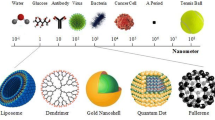Abstract
Phytochelatins, or (γ-glutamyl-cysteine) n -glycine, are specialized peptides produced by plants and algae to mitigate toxic metal exposure, for instance in response to high levels of metals such as Cu, Cd, and Zn. Stability constants and structural characterization of metal–phytochelatin complexes are lacking. This information is required to gain mechanistic insights on the metal selectivity of phytochelatins. Here, we studied structural coordination and thermodynamic stability by performing molecular dynamics simulations of a fully hydrated phytochelatin molecule complexed with Ca2+, Mg2+, Fe2+, Zn2+, and Cu2+. Our results predict the following decreasing order for the thermodynamic stability of the phytochelatin complexes: Zn2+ ≥ Cu2+ ≥ Fe2+ > Mg2+ > Ca2+. The favorable binding energies with Zn2+ and Cu2+ over the other metal cations can be explained by shorter binding distances and greater coordination from carboxylate and keto O atoms. Conformational rearrangement of phytochelatin following metal chelation was captured by monitoring changes in the solvent-accessible volume. Accessibility of solvent molecules to the phytochelatin structure was inversely proportional to the distance between the coordinated ligands and the chelated metal. These new findings demonstrate the influence of the metal–phytochelatin structure on the metal-binding thermodynamics and the phytochelatin conformation, both of which are important to evaluate the intracellular role of phytochelatin in mediating algal response to toxic heavy metal exposure.



Similar content being viewed by others
References
Accelrys Software Inc (2013) Materials studio modeling environment, Release 7.0. Accelrys Software Inc., San Diego
Adams MS, Dillon CT, Vogt S, Lai B, Stauber J, Jolley DF (2016) Copper uptake, intracellular localization, and speciation in marine microalgae measured by synchrotron radiation X-ray fluorescence and absorption microspectroscopy. Environ Sci Technol 50:8827–8839. doi:10.1021/acs.est.6b00861
Ahner BA, Morel FMM (1995) Phytochelatin production in marine algae. 2. Induction by various metals. Limnol Oceanogr 40:658–665. doi:10.4319/lo.1995.40.4.0658
Aristilde L, Sposito G (2008) Molecular modeling of metal complexation by a fluoroquinolone antibiotic. Environ Toxicol Chem 27:2304–2310. doi:10.1897/08-059.1
Boyd RS (2010) Heavy metal pollutants and chemical geology: exploring new frontiers. J Chem Ecol 36:46–58. doi:10.1007/s10886-009-9730-5
Calvo R, Steren CA, Piro OE, Rojo T, Zuniga FJ, Castellano EE (1993) Crystal structure and magnetic properties of diaqua (l-aspartato) copper(II). Inorg Chem 32:6016–6022. doi:10.1021/ic00078a019
Choudhary M, Jetley UK, Khan MA, Zutshi S, Fatma T (2007) Effect of heavy metal stress on proline, malondialdehyde, and superoxide dismutase activity in the cyanobacterium Spirulina platensis–S5. Ecotoxicol. Environ Safe 66:204–209. doi:10.1016/j.ecoenv.2006.02.002
Cobbett CS (2000) Phytochelatins and their roles in heavy metal detoxification. Plant Physiol 123:825–832. doi:10.1104/pp.123.3.825
Dorčák V, Krężel A (2003) Correlation of acid–base chemistry of phytochelatin PC2 with its coordination properties towards the toxic metal ion Cd(II). Dalton Trans 11:2253–2259. doi:10.1039/B301357J
Harris DC (2009) Exploring chemical analysis, 4th edn. W. H. Freeman and Company, Basingstoke
Mendoza-Cózatl DG, Zhai Z, Jobe TO, Akmakjian GZ, Song W-Y, Limbo O, Russell MR, Kozlovskyy VI, Martinoia E, Vatamaniuk OK, Russell P, Schroeder JI (2010) Tonoplast–localized Abc2 transporter mediates phytochelatin accumulation in vacuoles and confers cadmium tolerance. J Biol Chem 285:40416–40426. doi:10.1074/jbc.M110.155408
Nagajyoti PC, Lee KD, Sreekanth TVM (2010) Heavy metals, occurrence and toxicity for plants: a review. Environ Chem Lett 8:199–216. doi:10.1007/s10311-010-0297-8
Pickering IJ, Prince RC, George GN, Rauser WE, Wickramasinghe WA, Watson AA, Dameron CT, Dance IG, Fairlie DP, Salt DE (1999) X-ray absorption spectroscopy of cadmium phytochelatin and model systems. Biochem Biophys Acta 1429:351–364
Pochodylo AL, Aoki TG, Aristilde L (2016) Adsorption mechanisms of microcystin variant conformations at water-mineral interfaces: a molecular modeling investigation. J Colloid Interface Sci 480:166–174. doi:10.1016/j.jcis.2016.07.016
Rauser WE (1995) Phytochelatins and related peptides. Structure, biosynthesis, and function. Plant Physiol 109:1141–1149
Shtyrlin VG, Zyavkina YI, Ilakin VS, Garipov RR (2005) Structure, stability, and ligand exchange of copper(II) complexes with oxidized glutathione. J Inorg Biochem 99:1335–1346. doi:10.1016/j.jinorgbio.2005.03.008
Spain SM, Rabenstein DL (2003) Characterization of the acid/base and redox chemistry of phytochelatin. Anal Chem 75:3712–3719. doi:10.1021/ac0207426
Strasdeit H, Duhme A-K, Kneer R, Zenk MH, Hermes C, Nolting H-F (1991) Evidence for discrete Cd(SCys)4 units in cadmium phytochelatin complexes from EXAFS spectroscopy. J Chem Soc Chem Comm 16:1129–1130. doi:10.1039/C39910001129
Tennstedt P, Peisker D, Böttcher C, Trampczynka A, Clemens S (2009) Phytochelatin synthesis is essential for the detoxification of excess zinc and contributes significantly to the accumulation of zinc. Plant Physiol 149:938–948. doi:10.1104/pp.108.127472
Walsh MJ, Goodnow SD, Vezeau GE, Richter LV, Ahner BA (2015) Cysteine enhances bioavailability of copper to marine phytoplankton. Environ Sci Technol 49:12145–12152. doi:10.1021/acs.est.5b02112
Acknowledgements
We thank Thalia Aoki and David Flannelly for technical assistance and Beth Ahner for insightful discussions during the early stages of this work. A.L.P. acknowledges a Cornell University Graduate School Fellowship.
Author information
Authors and Affiliations
Corresponding author
Rights and permissions
About this article
Cite this article
Pochodylo, A.L., Aristilde, L. Molecular dynamics of stability and structures in phytochelatin complexes with Zn, Cu, Fe, Mg, and Ca: Implications for metal detoxification. Environ Chem Lett 15, 495–500 (2017). https://doi.org/10.1007/s10311-017-0609-3
Received:
Accepted:
Published:
Issue Date:
DOI: https://doi.org/10.1007/s10311-017-0609-3




